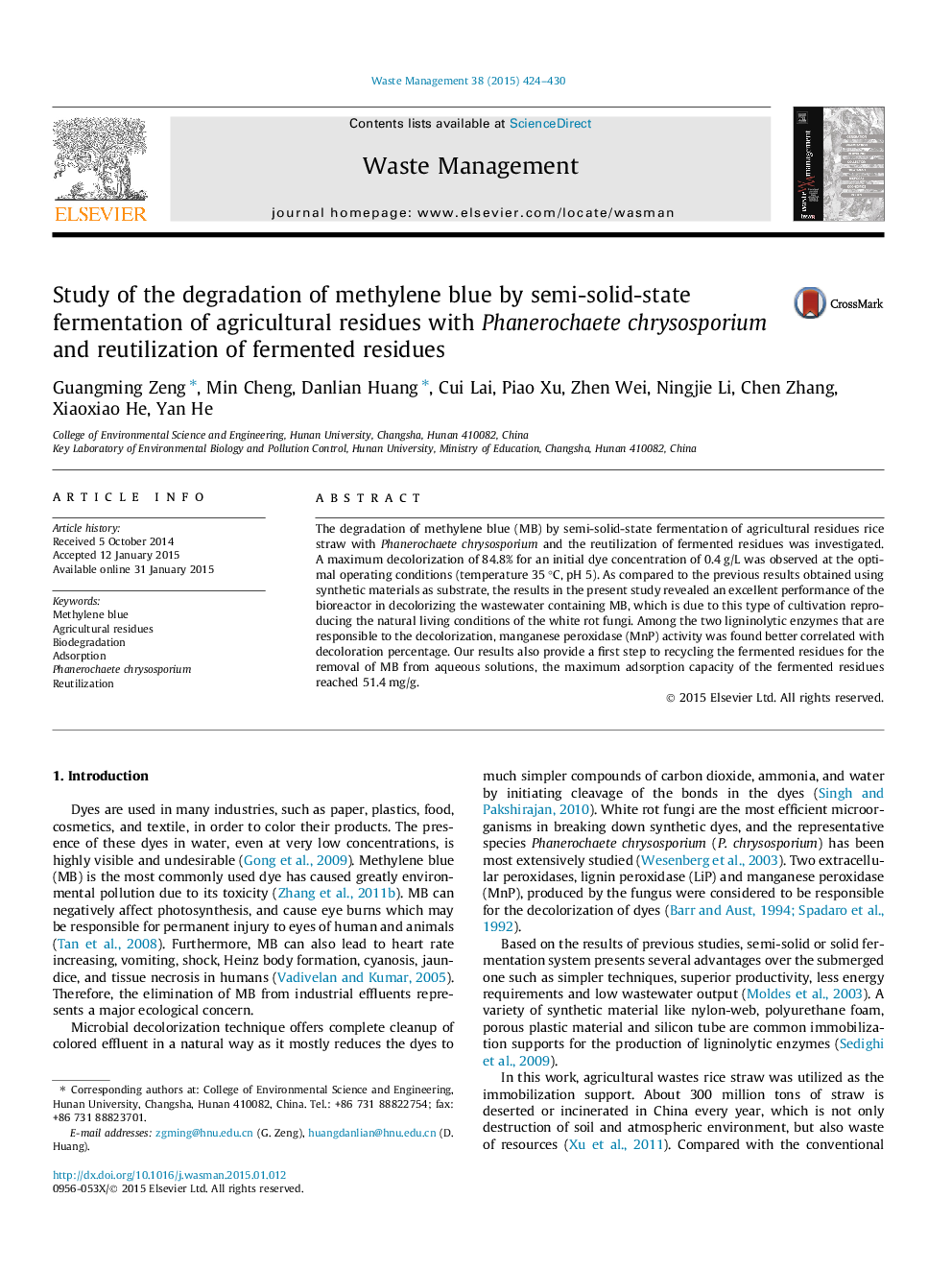| Article ID | Journal | Published Year | Pages | File Type |
|---|---|---|---|---|
| 4471428 | Waste Management | 2015 | 7 Pages |
•Rice straw ferment with P. chrysosporium is efficient for removing of methylene blue.•A decolorization of 84.8% for an initial dye concentration of 0.4 g/L was observed.•The most appropriate temperature is 35 °C and the most appropriate pH is 5.•The maximum dye adsorption amount of the fermented residues reached 51.4 mg/g.
The degradation of methylene blue (MB) by semi-solid-state fermentation of agricultural residues rice straw with Phanerochaete chrysosporium and the reutilization of fermented residues was investigated. A maximum decolorization of 84.8% for an initial dye concentration of 0.4 g/L was observed at the optimal operating conditions (temperature 35 °C, pH 5). As compared to the previous results obtained using synthetic materials as substrate, the results in the present study revealed an excellent performance of the bioreactor in decolorizing the wastewater containing MB, which is due to this type of cultivation reproducing the natural living conditions of the white rot fungi. Among the two ligninolytic enzymes that are responsible to the decolorization, manganese peroxidase (MnP) activity was found better correlated with decoloration percentage. Our results also provide a first step to recycling the fermented residues for the removal of MB from aqueous solutions, the maximum adsorption capacity of the fermented residues reached 51.4 mg/g.
Graphical abstractFigure optionsDownload full-size imageDownload as PowerPoint slide
